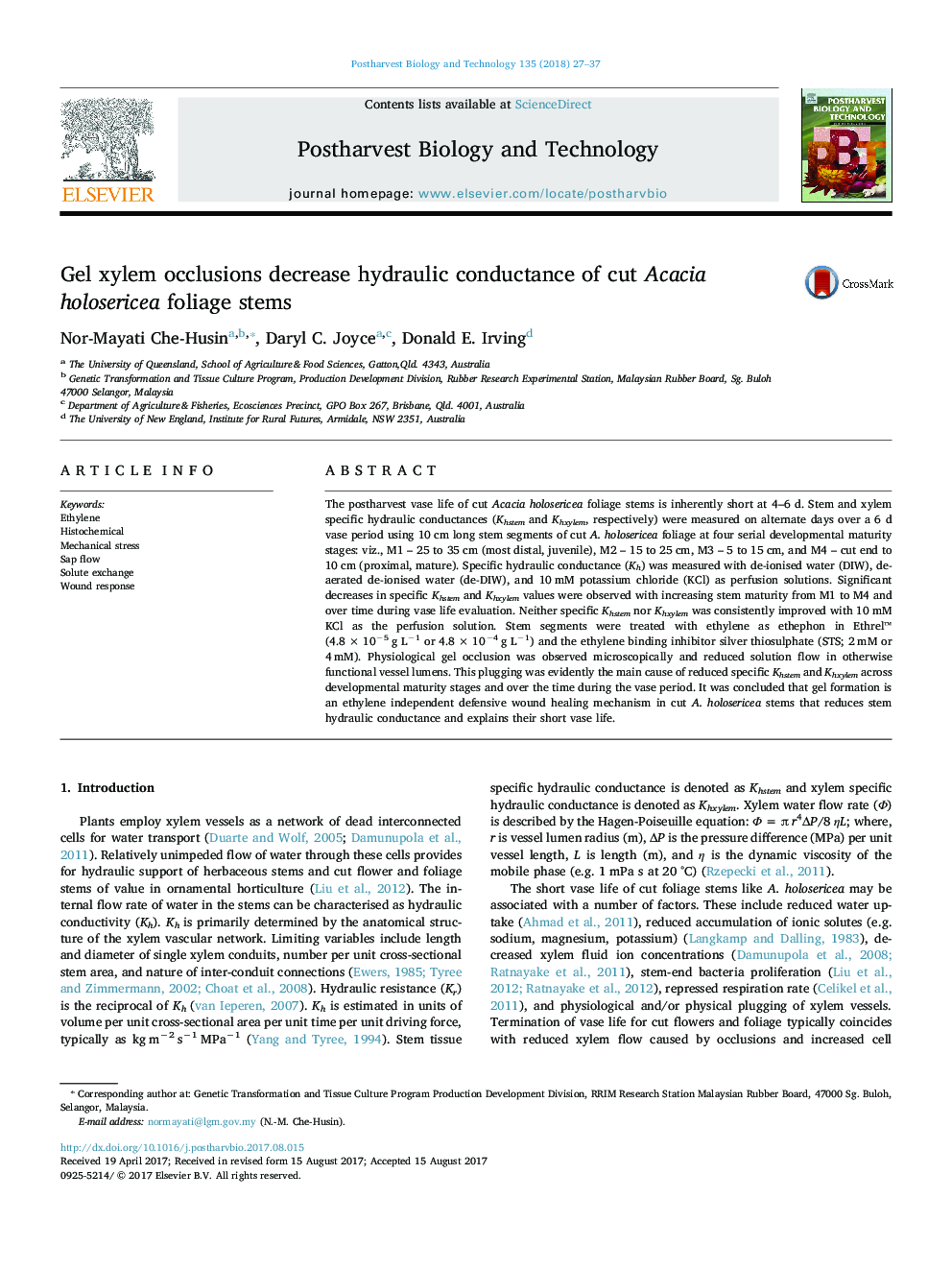| Article ID | Journal | Published Year | Pages | File Type |
|---|---|---|---|---|
| 5762625 | Postharvest Biology and Technology | 2018 | 11 Pages |
Abstract
The postharvest vase life of cut Acacia holosericea foliage stems is inherently short at 4-6 d. Stem and xylem specific hydraulic conductances (Khstem and Khxylem, respectively) were measured on alternate days over a 6 d vase period using 10 cm long stem segments of cut A. holosericea foliage at four serial developmental maturity stages: viz., M1 - 25 to 35 cm (most distal, juvenile), M2 - 15 to 25 cm, M3 - 5 to 15 cm, and M4 - cut end to 10 cm (proximal, mature). Specific hydraulic conductance (Kh) was measured with de-ionised water (DIW), de-aerated de-ionised water (de-DIW), and 10 mM potassium chloride (KCl) as perfusion solutions. Significant decreases in specific Khstem and Khxylem values were observed with increasing stem maturity from M1 to M4 and over time during vase life evaluation. Neither specific Khstem nor Khxylem was consistently improved with 10 mM KCl as the perfusion solution. Stem segments were treated with ethylene as ethephon in Ethrel⢠(4.8 Ã 10â5 g Lâ1 or 4.8 Ã 10â4 g Lâ1) and the ethylene binding inhibitor silver thiosulphate (STS; 2 mM or 4 mM). Physiological gel occlusion was observed microscopically and reduced solution flow in otherwise functional vessel lumens. This plugging was evidently the main cause of reduced specific Khstem and Khxylem across developmental maturity stages and over the time during the vase period. It was concluded that gel formation is an ethylene independent defensive wound healing mechanism in cut A. holosericea stems that reduces stem hydraulic conductance and explains their short vase life.
Related Topics
Life Sciences
Agricultural and Biological Sciences
Agronomy and Crop Science
Authors
Nor-Mayati Che-Husin, Daryl C. Joyce, Donald E. Irving,
